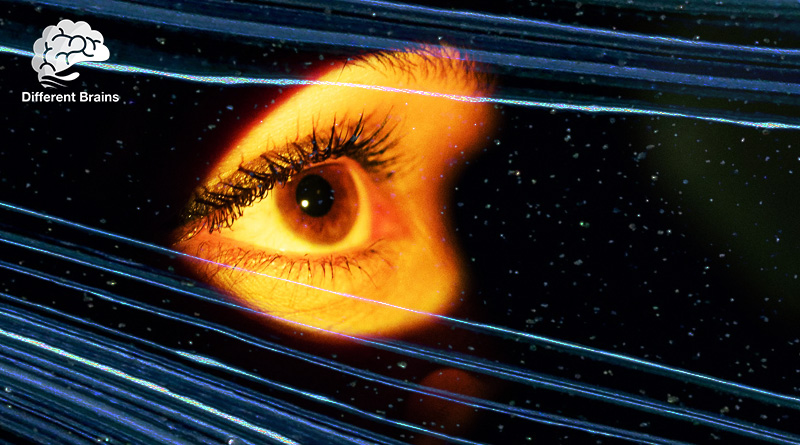By Nicholas Bamonte
When Order Emerges from Chaos
I’m not completely sure when I became actively aware of this, but my brain has always seemed to work a little bit… different from everyone else’s. I often struggled to sit still. I could be scatterbrained and absent minded. I would become agitated when around too many sights and sounds. I would often say or do things that others would find “weird”, not necessarily in a bad way, but those things would seem like nothing noteworthy in my mind, when to others they were. I tended to obsess and fixate on things and sensations. No matter how much I tried, I would constantly be behind everyone else in note taking, school assignments, or homework. And when these things gave me anxiety, I could never truly contain it or keep it from spiraling out of control.
The exact diagnosis and the symptoms that I focus on changes with time and how pedantic or empiric you want to be. Attention Deficit Hyperactivity Disorder, Processing Speed Deficit, Autism Spectrum Disorder, all names that have been given to me to help explain this difference, but that is what they are, names. The actual experience of neurodiversity can be very different from a clean list of symptoms and general tendencies listed in a journal. No, the real world is much more messy and blurry. And yet, for all of this frustration and isolation, these differences do not come without some benefits. With how much I struggled to keep up with others in tasks and how much my thoughts could be a paradoxical distracted scattershot of overanalyzed and questioned ideas and feelings, I came to, consciously or not, crave these moments where the storm breaks, and everything just, clicks, into a rapid stream. And sometimes, I reached this mythical state, and experienced a type of bliss that’s difficult to describe.
Like a Mighty River, Rapid, yet Smooth
This phenomenon is not unique to me. Mushin (“no mind” in Japanese), “In the Zone”, flow state, all names given to this special state of pure action and intention uninhibited by conscious command, however, there are two in particular that I wish to focus on today, hyperfixation and hyperfocus, because of their particular association with neurodiversity. While these two words may seem like synonyms, and they can be, they do often have subtle differences in meaning. They both refer to a state of intense and persistent focus on a particular topic or activity. Within this state, one is engaging the entirety of their focus and mental capacity to the given topic or task, often to the point of ignoring everything else around them or the passage of time. The term hyperfixation usually refers to when this state emerges spontaneously and becomes a distraction from important life events, such as eating and sleeping. Hyperfocus, meanwhile, is often used to refer to when this state is properly channeled to accomplish specific tasks or goals, and otherwise be “productive”. If this sounds at all familiar, that’s nothing surprising.
Hyperfixation is not a unique quality or symptom of any neurodiverse condition. In fact, it’s not really part of any formal diagnosis, it’s merely a phenomenon that’s been widely reported and recognized. Everyone, regardless of their neurodiversity status, has probably experienced Hyperfixation at some point in their lives. It just tends to be more common in those who are neurodiverse. The reasons for this are not fully understood, with a number of different theories relating to each condition with which it can be associated. For ADHD, it has been proposed that this may be a result of the observed deficiencies in the dopamine (a neurotransmitter that is heavily associated with the sensation of reward and accomplishment, among others) circuits of the brain, that the brain falls into a self-feeding loop that elevates the often inadequate levels of dopamine within the ADHD brain. Hyperfixation is usually triggered by enjoyable activities or topics, and the sensation can feel like a pleasurable rush, after all. For ASD, some think that it may be the result of cognitive inflexibility, a common hallmark of Autism. Finally, ADHD, ASD, and even OCD are all associated with emotional dysregulation and anxiety. That Hyperfixation might be a way to seek comfort in complex tasks and challenges or avoid unpleasant emotions, such as grief and trauma. This is, at least, the findings and theories of other writers and psychologists attempting to make sense of this phenomenon.
A Highly Personal Experience
While I’ve only recently truly identified it as such, I have plenty of first hand experience with Hyperfixation. In many regards, I probably spend much of my life in a minor state of Hyperfixation. While rarely in this all-consuming rush that I associate with “true” Hyperfixation, my mind will almost always have some topic or idea that it will be obsessively gravitating towards at any given moment. A fictional story that I adore, lore related to said fictional story, an idea for a story that I want to write, my favorite video games and what I plan to do next in them, even just fantasies of being some kind of action hero in any of the above. My mind will more often than not be distracted with thoughts related to these things, often at the expense of other things around me, and (to my infinite embarrassment) conversations with others. Not only can it be hard to control, but honestly, I rarely desire to control it. My imagination is something very important to me. As a writer, it is my bread and butter. And if nothing else, I find it an incredibly useful and ever-present way to pass the time and stave-off boredom. While these moments do possess many of the surface level traits of an episode of Hyperfixation, all-consuming thoughts related to a specific topic, time blindness, distractibility, etc., I do not consider them “true” instances of Hyperfixation. The symptoms are usually more mild and possibly indistinguishable from the general symptoms of my ADHD.
What I consider true moments of Hyperfixation, where I genuinely lose track of time and find my thoughts free of all normal distractions, are rarer, but far more intense. These moments are usually triggered by a highly unusual, yet also rewarding, event. Once, during a Creative Writing class in college, I was working close to the deadline on my final project for the class. It had already gotten to be rather late, so I woke up earlier than usual to try and finish it in the morning. Even after all these years, I still remember that morning so clearly. My mind was completely awake, wired even. My fingers danced across the keys like a piano virtuoso. Like a fast moving stream, I felt everything just, moving, quickly, yet steadily. I finished that assignment, and loved every minute of it. Since this was a more productive experience, I suppose this could qualify more as a moment of Hyperfocus, and yet I hardly feel that this was triggered in any way deliberately.
Other times this has happened, I was working on personal projects, minor forays into coding and file manipulation. Nothing grand, but fields that I have little to no experience in, and knew very little about. I can often be intimidated when facing unknowns, more often than not simply wishing for someone to guide and help explain the basics to me. And yet, I have found that, when the conditions are right, facing an unknown can lead to absolute ecstasy for me. Once the initial hump is cleared, my mind whirls, continuously accelerating in a mad whirlwind of processes, switching from part to part seamlessly, getting closer and closer to the goal of the project that I set out to accomplish. Yes, an enjoyable and productive experience, but one with its own perils.
While there are the usual issues that come with Hyperfixation, there is another factor for me that the literature does not discuss. Not only do I want to lock in and continue with my project, I kind of have to. Working memory and task switching can be a challenge for me at the best of times, and while I seem to be firing on all cylinders with no clear sign of my previous deficits, they’re still there. I know that later, if I try to return to the project after an amount of time, I’m going to be lost and confused, so much of the information either not properly encoded into long term memory or locked within that extremely productive altered state of consciousness (something called state-dependent memory, the idea that memories are encoded into long term memory with the context of where they occurred, or the state of consciousness you were in when you made them, so it is easier or can only be accessed when in that same state of consciousness). The normal me will look back on my work like it was a conspiracy theorist’s board. In this regard, I may realize that I should stop and do something else, but I’m afraid to, afraid that I will never finish what I’ve started if I stop in the middle of it. I become beholden to myself.
Unleashing the Mind’s Hidden Potential
Hyperfixation can be a double-edged sword, but it doesn’t have to be. True, it can be hard to escape a Hyperfixation spiral, or even realize that you are in one, but you don’t have to go it alone. Set reminders on your phone to help remind you of how much time has passed. Ask friends or family to check in on you or sit in with you if you find yourself repeatedly getting sucked down rabbit holes when you should be working on something in particular. I know for myself that I’m far less tempted to fall for distractions when I have someone else keeping an eye on me. Things like this can help you manage and avoid falling into Hyperfixation, but unlike other symptoms of neurodiverse conditions, you can do far more than merely manage it. With the concept of Hyperfocus being a distinct thing, I have awoken to the idea that entering a flow state does not have to be a fortunate event, or something that can only be triggered through harsh adversity. That with a little concentration and intention, I can enter this blissful state of my own will. I do not have any advice on how to achieve this, as I have only just started this journey myself, but it’s a beautiful dream worth striving towards. To freely enter this state where I am free of my usual doubts and anxiety, where all my effort feels effortless and I am able to act in the way that I envision in my head; where I feel at peace yet excited and happy in a way that’s not undercut by any unpleasant emotions or self-doubts or criticisms. It’s beautiful.
Sources:





